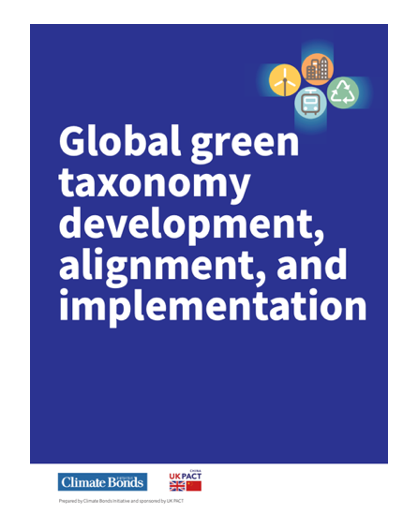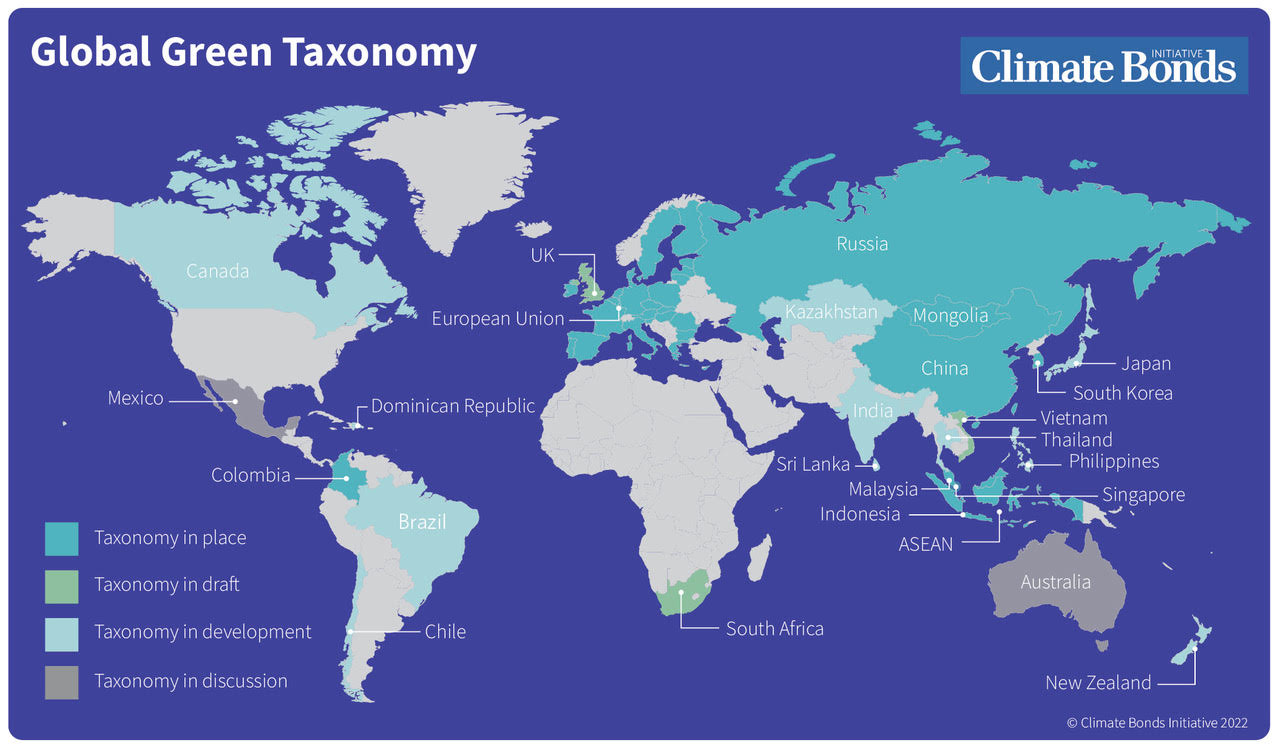International Green Taxonomy developments, latest trends and the EU-China case study
The Climate Bonds Initiative (Climate Bonds), in collaboration with the UK PACT programme, today launched the Global Green Taxonomy Development, Alignment and Implementation report which highlights the latest trends around taxonomy development and their the subsequent implications for the future of the sustainable finance market.
The report also provides a comparison of the EU and China taxonomies as a case study: comparing their design; guiding principles; technical screening criteria; and other considerations in developing the pilot Common Ground Taxonomy between China and the EU. In addition, it describes applications of green taxonomies, including product development; risk management; branding; and disclosure.

Other highlights in the report include:
- Green taxonomy developments around the globe;
- A summary of methodologies of developing green taxonomies; and
- Green taxonomy implementation for market participants.
The report is available for download in English and Chinese.
According to the report, policymakers and market participants are acknowledging the role that robust taxonomies can fill in attracting the capital required to support the transition to a sustainable economy.
Said Sean Kidney, CEO, Climate Bonds Initiative:
“We now see policymakers and market participants embracing taxonomies as a powerful tool to mobilise green capital for the transition to an economy that is sustainable and which respects the environment. Taxonomies also provide more transparency regarding risks and disclosure for investors. We are looking forward to seeing more integration among global taxonomies, addressing implementation, as well as more transition elements included in their developments in 2022

In 2012, Climate Bonds introduced voluntary guidelines for the market by publishing its taxonomy. A growing number of jurisdictions around the globe have subsequently recognised the importance of taxonomies and developed classification schemes of sustainable economic activities.
Separate taxonomies can lead to market fragmentation. Thus, harmonising eligible assets and metrics across jurisdictions is an essential step in taxonomy development and will help to facilitate international green capital at scale.
In this sense, China and the EU have been leading the efforts in taxonomy harmonisation through the development of the IPSF platform which provides a solid foundation for others to build on. A successful green taxonomy needs to balance alignment with international practices and consideration for regional circumstances.
Taxonomies must also be dynamic and allow for market and technology developments to be integrated as they arise. The IPSF platform provides useful insights into how these may be achieved.
The Final Word
There is little doubt that green taxonomies will continue to shape the future of the sustainable finance market as they evolve around the globe. Within this context, the harmonization of taxonomy will play a critical role in ensuring that the benefits derived are leveraged at scale and in an appropriate context.
See you soon,
Climate Bonds
